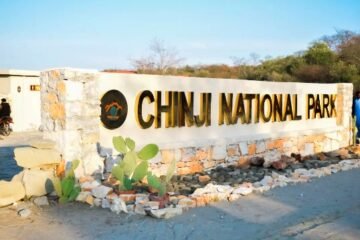The Scottish Government has announced a series of new initiatives to support the sustainable development of tourism in the Highlands, with a focus on empowering local communities and protecting the natural environment.
A New Fund for Community-Led Tourism
One of the main initiatives is the creation of a new fund for community-led tourism projects, which will provide grants of up to £100,000 for groups that want to develop or enhance tourism facilities or services in their areas. The fund aims to help communities to benefit from the economic and social opportunities of tourism, while also addressing the challenges and pressures that tourism can bring.
The fund is open to applications from community groups, social enterprises, charities, and other non-profit organisations that have a clear vision and plan for how to improve tourism in their locality. The projects should align with the principles of the National Tourism Strategy, which include promoting responsible and sustainable tourism, enhancing the visitor experience, and supporting the recovery and resilience of the tourism sector.
Some of the examples of eligible projects are:
- Developing or improving visitor attractions, such as museums, heritage sites, cultural venues, or outdoor activities.
- Creating or enhancing tourism infrastructure, such as paths, trails, signage, parking, or public toilets.
- Providing or improving tourism services, such as information, transport, accommodation, or food and drink.
- Developing or delivering tourism training, skills, or education programmes for local residents or businesses.

The fund is administered by Highlands and Islands Enterprise (HIE), the Scottish Government’s economic and community development agency for the region. HIE will provide guidance and support to applicants throughout the process, and will also monitor and evaluate the outcomes and impacts of the funded projects.
The fund is part of the £25 million Rural Tourism Infrastructure Fund, which was launched in 2018 to address the impact of increased visitor numbers on rural areas. The fund has already supported over 50 projects across Scotland, such as the construction of a new visitor centre at the Glenfinnan Viaduct, the installation of electric vehicle charging points at the Cairngorms National Park, and the improvement of access and facilities at the Isle of Skye Fairy Pools.
A New Strategy for Sustainable Tourism in the Cairngorms
Another initiative is the development of a new strategy for sustainable tourism in the Cairngorms National Park, which covers a large part of the Highlands and is one of the most popular destinations for visitors in Scotland. The strategy will set out a vision and a framework for how to manage and enhance tourism in the park in a way that balances the needs and interests of visitors, residents, businesses, and the environment.
The strategy will be based on extensive consultation and engagement with a wide range of stakeholders, including local communities, tourism operators, conservation groups, landowners, and public agencies. The strategy will also draw on the best practices and experiences of other national parks and protected areas around the world, as well as the latest research and evidence on sustainable tourism.
The strategy will address the key issues and challenges that tourism poses for the park, such as:
- The impact of tourism on the natural environment, wildlife, and biodiversity, and how to minimise and mitigate the negative effects, such as litter, pollution, erosion, or disturbance.
- The impact of tourism on the local economy, society, and culture, and how to maximise and distribute the positive benefits, such as income, employment, education, or community cohesion.
- The impact of tourism on the visitor experience, and how to ensure that visitors have a high-quality, enjoyable, and memorable stay, while also respecting and appreciating the park’s values and assets.
- The impact of tourism on the park’s management and governance, and how to ensure that tourism is integrated and coordinated with the park’s other objectives and functions, such as conservation, recreation, education, or research.
The strategy will also identify the key opportunities and priorities for tourism development and innovation in the park, such as:
- Developing or improving tourism products and services that showcase the park’s unique features and attractions, such as its landscapes, wildlife, heritage, or culture.
- Developing or improving tourism infrastructure and facilities that support the visitor journey and enhance the visitor experience, such as information, transport, accommodation, or food and drink.
- Developing or improving tourism marketing and promotion that raise the profile and reputation of the park as a destination, and attract and retain visitors from different markets and segments.
- Developing or improving tourism partnerships and networks that foster collaboration and cooperation among the park’s stakeholders, and leverage the resources and expertise of different sectors and organisations.
The strategy will be led by the Cairngorms National Park Authority (CNPA), the statutory body responsible for the management and planning of the park. The CNPA will work closely with other partners and agencies, such as VisitScotland, the national tourism organisation, and Scottish Natural Heritage, the national nature conservation agency. The strategy is expected to be completed and launched by the end of 2023.
A New Campaign to Promote Responsible Tourism in the Highlands
A third initiative is the launch of a new campaign to promote responsible tourism in the Highlands, which aims to raise awareness and educate visitors and residents about how to enjoy and respect the region’s natural and cultural heritage. The campaign is part of the wider Responsible Tourism Scotland initiative, which was launched in 2021 to support the recovery and transformation of the tourism sector after the Covid-19 pandemic.
The campaign will use various channels and platforms, such as social media, websites, podcasts, videos, or leaflets, to communicate and disseminate the key messages and tips for responsible tourism, such as:
- Plan ahead and book in advance, to avoid disappointment and overcrowding, and to support local businesses and services.
- Follow the Scottish Outdoor Access Code, which provides guidance on how to access and enjoy the outdoors responsibly and safely, and how to respect the rights and interests of others and the environment.
- Leave no trace, which means taking away all your rubbish and waste, and leaving the places you visit as you found them or better.
- Support local, which means choosing to buy and use local products and services, and contributing to the local economy and community.
- Be flexible and adaptable, which means being prepared for changing weather and circumstances, and being willing to explore alternative or less-visited destinations and attractions.
The campaign will also showcase and celebrate the diversity and richness of the Highlands as a tourism destination, and highlight the stories and experiences of the people and places that make the region special and unique. The campaign will also encourage visitors and residents to share their own stories and experiences of responsible tourism in the Highlands, and to inspire and influence others to follow their example.
The campaign is a joint initiative of several organisations and groups that are involved in the tourism sector in the Highlands, such as HIE, CNPA, VisitScotland, Scottish Natural Heritage, the Highland Council, and various local tourism associations and networks. The campaign is supported by the Scottish Government, which has allocated £1 million for the Responsible Tourism Scotland initiative in 2023.


















